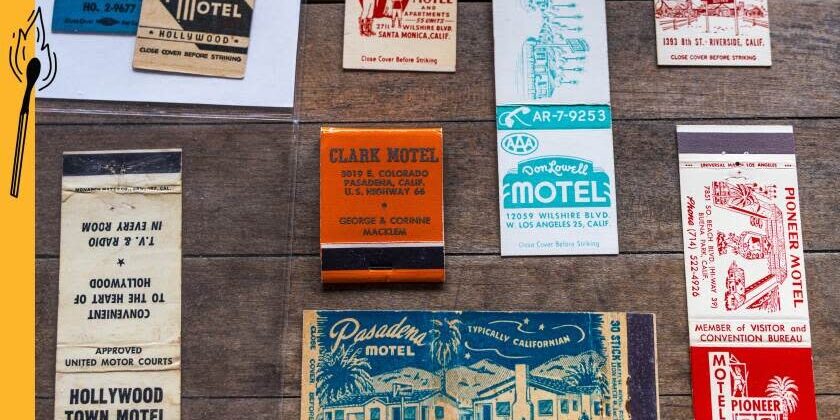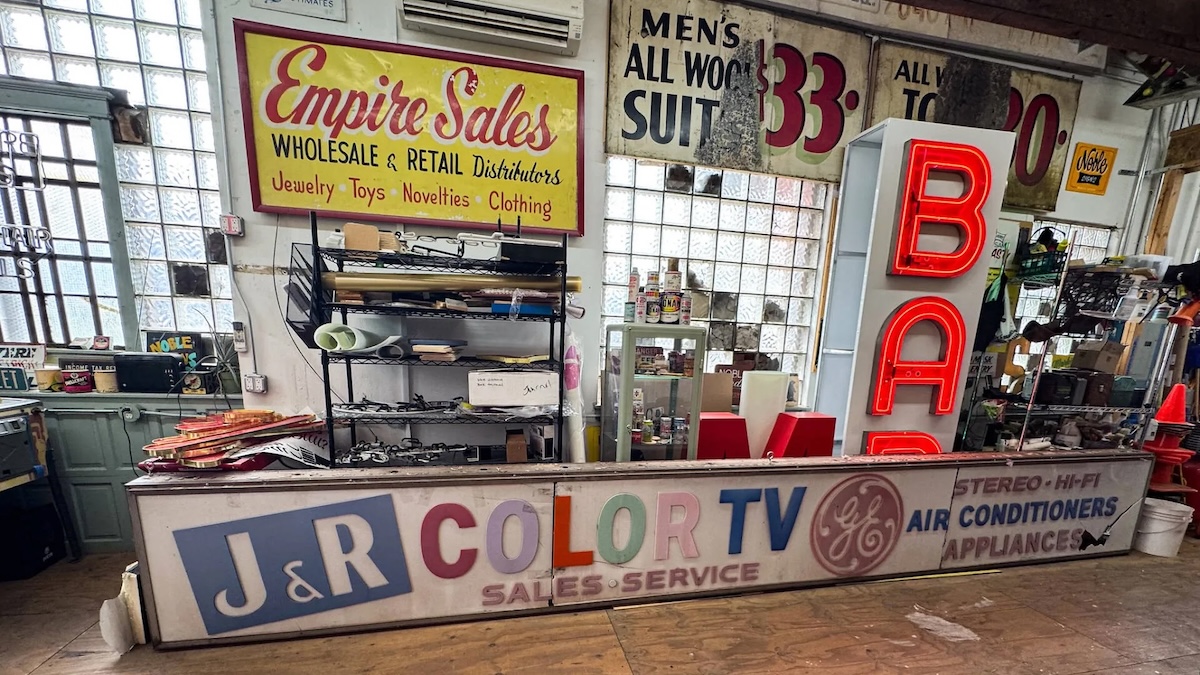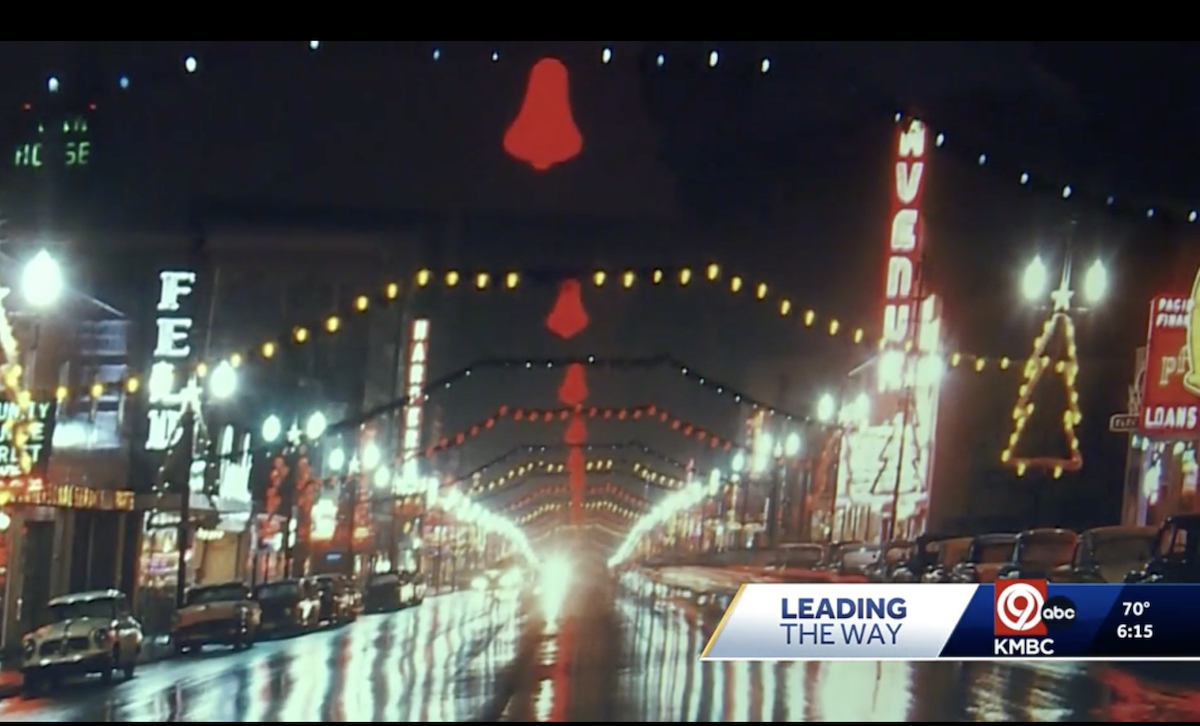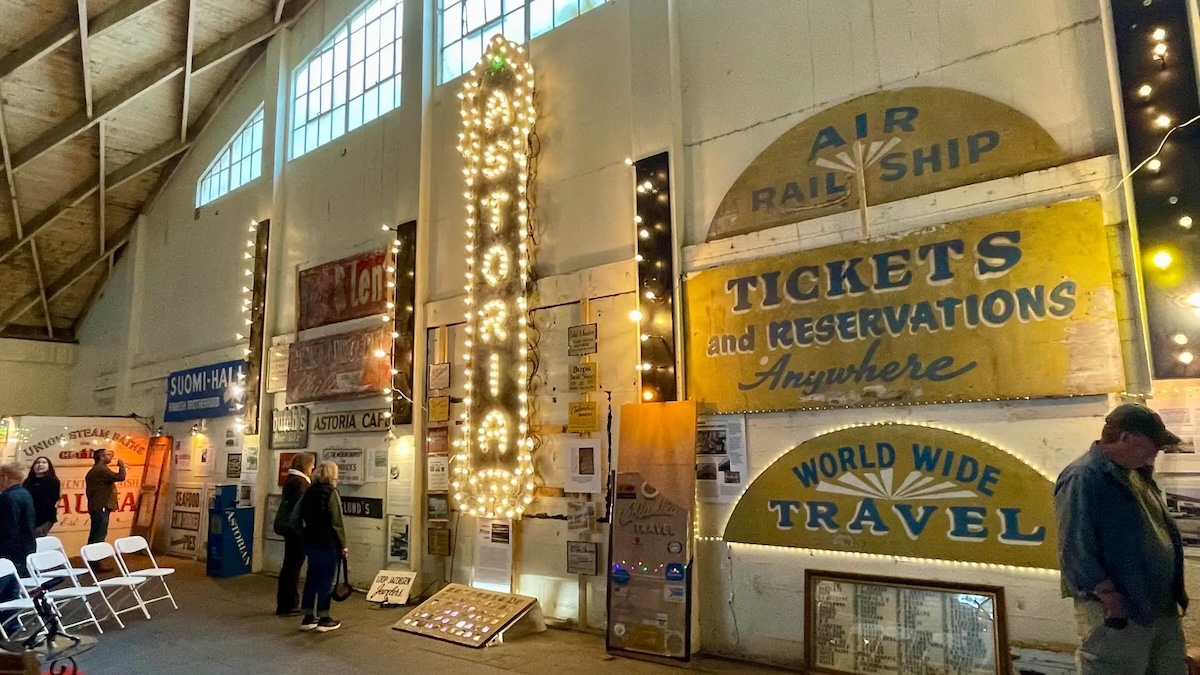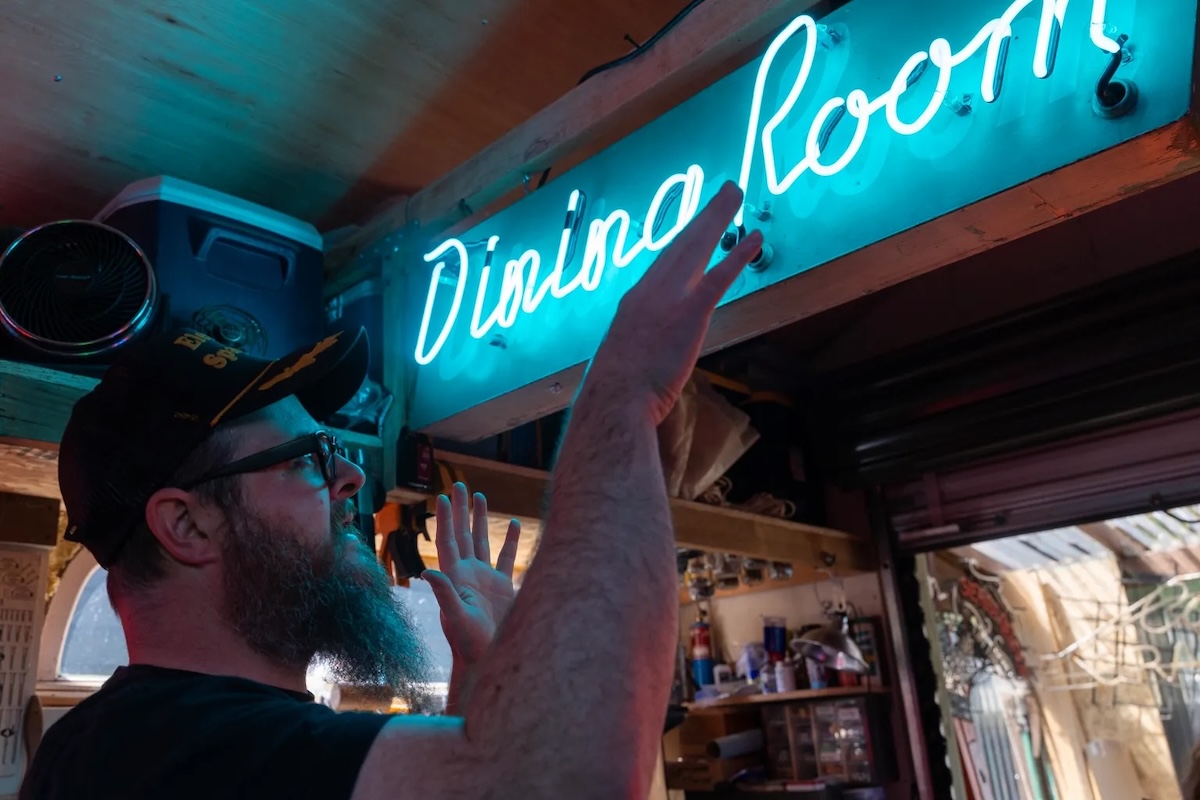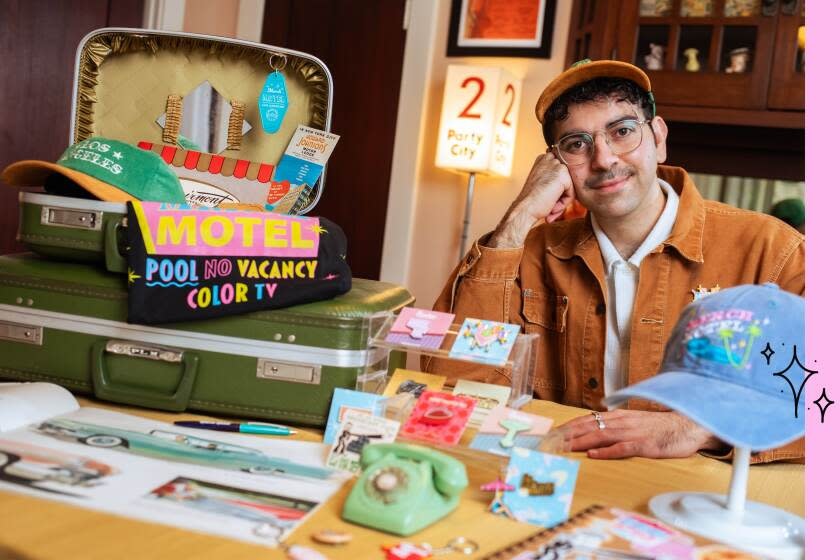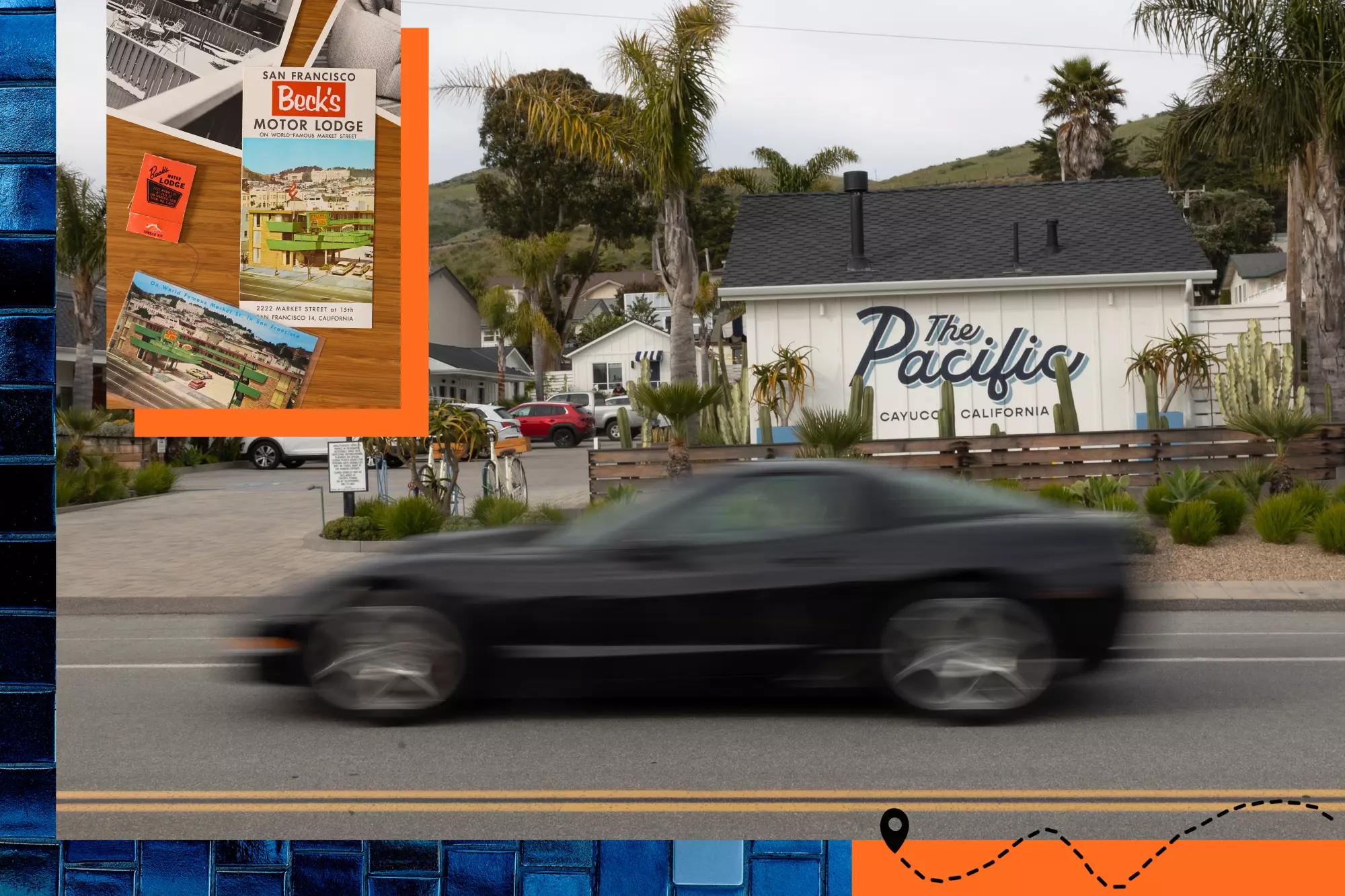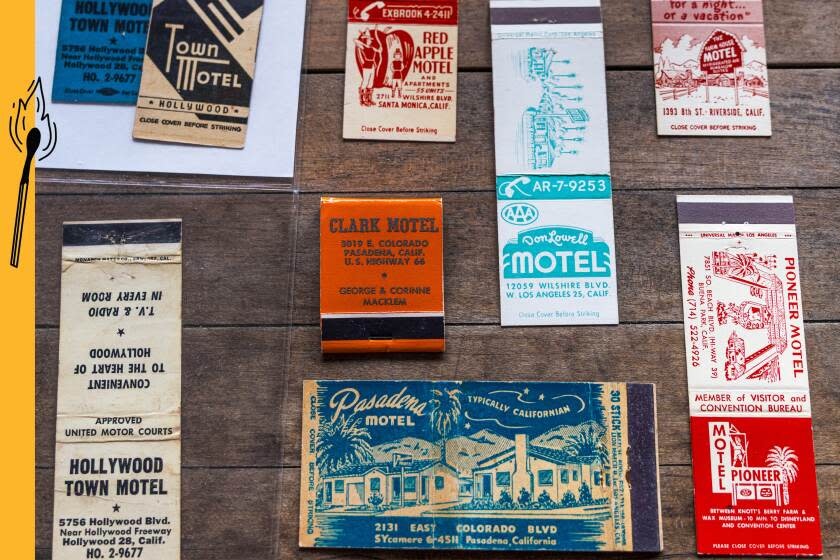Graveyard Shift: How a Brooklyn museum is resurrecting New York’s bygone business signs
Photograph: Amaya Nichole for Time Out
From Time Out New York: A pair of museum employees hold the sign from the top, and their heads duck and shoulders dip as they both descend the stairs. The sign—so large and so heavy that it had to be split into 13 different pieces to be properly transported and stored—is turned upside down, flipped horizontally and angled. It’s held from the top, the bottom and the sides. Each step down is a silent negotiation with each other, gravity, friction and fate.
Outside of general comments like “please be careful” and “watch your step,” there’s little conversation. They just move, improvise and force the sign through the cellar doors, inch by stubborn inch.
We take this route—go outside the main entrance, down the basement stairs, walk through the basement, up the back basement steps, and walk through the side doors back into the main room where we started—10 times just to relocate one sign.
Kansas City neon museum to illuminate the past with vintage signs
Minnesota Avenue, 1958
From KMBC: KANSAS CITY, Mo. — A new museum coming to Kansas City hopes to bring the city’s glowing past back to life—one neon sign at a time.
Local photographer Nick Vedros is leading an effort to preserve, restore and display some of the most iconic neon signs from Kansas City’s past.
The LUMI Neon Museum is set to open later this year near the new Ferris wheel at Penway Point.
“These signs were the historical fabric of our city,” Vedros said. “I decided I wanted to pull them all together, so we had them in one spot.”
Signs of the times light up new museum in Astoria
The old Astoria Theater marquee is surrounded by signs collected by curator Jeff Daly. (Jasmine Lewin/The Astorian)
From the Astorian: Astoria, Oregon’s new sign museum, located in the upper level of the Astoria Armory, walks visitors through the history of the town’s 20th century with colorful details, handmade lettering and references to businesses past.
It all started over a dozen years ago with an 18-foot light-up sign spotted in a Seaside salvage yard. Mitch Mitchum, a former Astoria Public Works director, and John Goodenberger, a local historian, rescued the old Astoria Theater emblem from obscurity and brought it back to Astoria as a piece of history.
For years, Mitchum stored the sign in one of his commercial buildings, approaching various civic groups about restoring the sign. Nobody wanted to take on the challenge of a 1923 marquee except Jeff Daly, who took the sign under his wing and retro-restored it. It now shines brightly with over 200 bulbs in memory of Mitchum, who died shortly before the work was completed.
How Portland’s hidden neon shop is keeping the city bright — one tube at a time
Nigel Barnes, owner of Electric Spaghetti Neon, shows a neon sign that he restored for a restaurant in Medford. (Jaime Valdez, Portland Tribune)
From the Portland Tribune: About 20 paces into the Southeast Portland, Oregon, home’s backyard sits a dwelling slightly larger than a standard shed. Inside: Glowing, vibrant neon signs depicting green skulls, palm readings, skateboarding slang, dining room directional and more.
It’s Nigel Barnes and Jen Casebolt’s backyard where they run their business, Electric Spaghetti Neon. The two work to craft new, and restore, true neon signs — not the LED knockoffs found on Amazon.
“The technology is crazy and esoteric,” Barnes said. “Then there’s the artistic part to it. Every time I light it up, I’m like, ‘Wow, that looks great,’ and it does the magic thing.”
When everything is ‘gray, gray, gray,’ he leans into the kitschy fun of retro motels
(Photograph by Emil Ravelo / For The Times)
From the LA Times: It’s a Saturday afternoon in Pasadena, and Barkev Msrlyan is talking about how much he likes toilets.
Not just any toilets, though. Vintage ones, like the pink, green and purple commodes they sell at Pasadena Architectural Salvage, where Msrlyan has set up in a corner amid the retailer’s reclaimed materials to peddle air fresheners, stickers and pins he’s made featuring those exact toilets. It’s part of a collaboration between his brand, Merch Motel, and the store, which is celebrating its 25th anniversary.
The toilet pins were the hot item that day, Msrlyan said, though he also was selling quite a few Los Angeles hats and Altadena keychains. People loved the vintage look of the pink toilets, which hark back to a time when bathrooms — whole houses, really — weren’t quite so bland and boring.
I went on a 2,500-mile search for the greatest motels in California. Here’s what I found
(Photographs by Jacob Tovar / For The Times; Megan Bayley / For The Times)
From the LA Times: Listen. That’s the low hum of the highway you hear behind me, offset by the rumble of the ice machine down the breezeway. We gather today to celebrate the motel, a uniquely American creature, conceived in California through the unholy embrace of the automobile and the hotel.
Since that beginning in 1925, motels have multiplied like bunnies. They have been implicated in countless crimes and liaisons. They have been elevated by some savvy architects, undercut by assorted chain operations and frequently left for dead by the side of the road.
Yet certain survivors have done some dramatic social climbing, especially lately. Plenty of motels have moved from budget to boutique, often renaming themselves as inns, lodges or hotels and capitalizing on their vintage looks. Like turntables, typewriters, tiki bars and film cameras, these midcentury motels are back, seducing millennials, Gen Z and baby boomers like the character Johnny Rose on the beloved TV series “Schitt’s Creek.”
They collect tens of thousands of matchbooks. Here are their favorite vintage motel finds
(Amanda Villegas / For The Times)
From the LA Times: Denise McKinney says she has probably somewhere close to half a million matchbooks tucked away inside her Riverside home.
She’s been collecting for years and will typically pick up whatever strikes her fancy, no pun intended. She has specialties now, like matchbooks with animals on them or matchbooks that advertise radio and TV stations, but she says her biggest collection by far is books from Southern California, including vintage motel matchbooks.
The president of the Angelus Matchcover Club says she likes matchbooks because of how they reflect a region’s history. She’s grabbed books that tout Route 66 attractions or places from her Orange County hometown.


